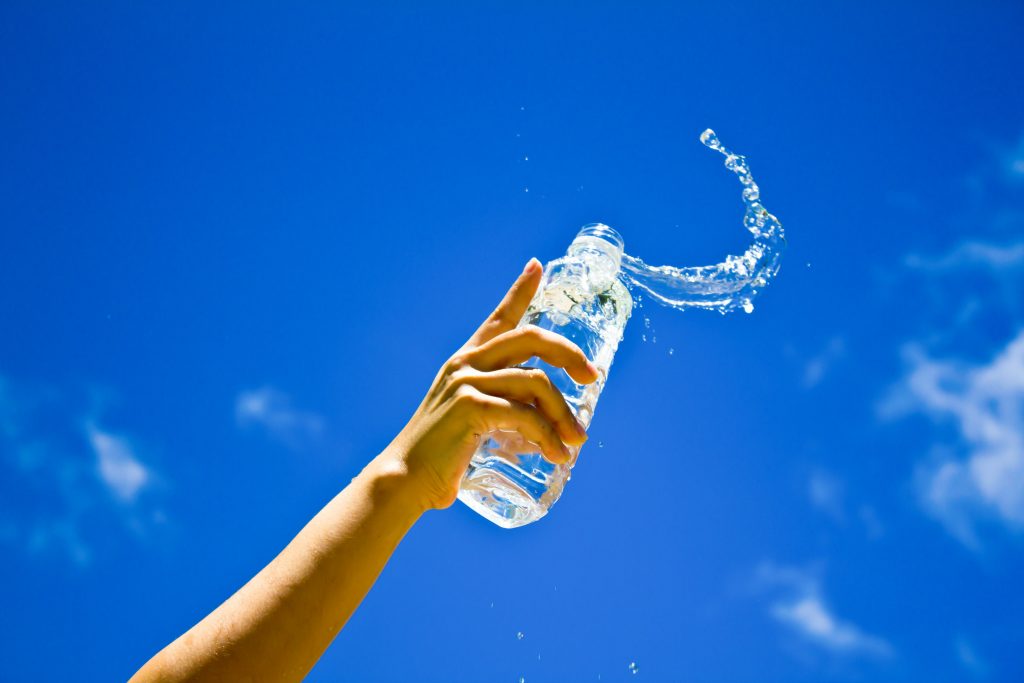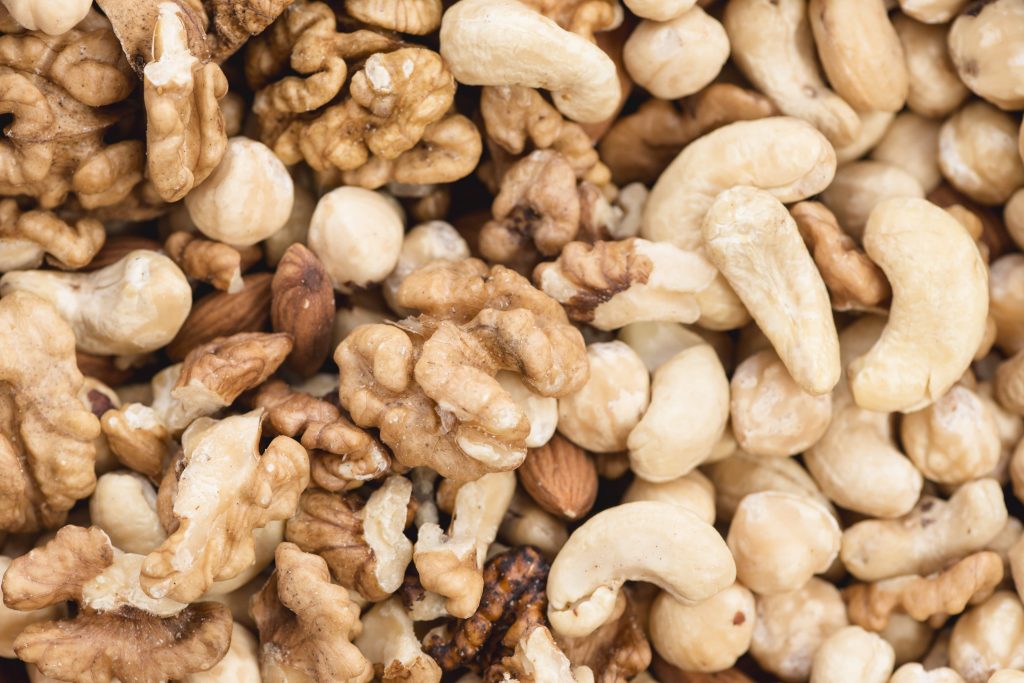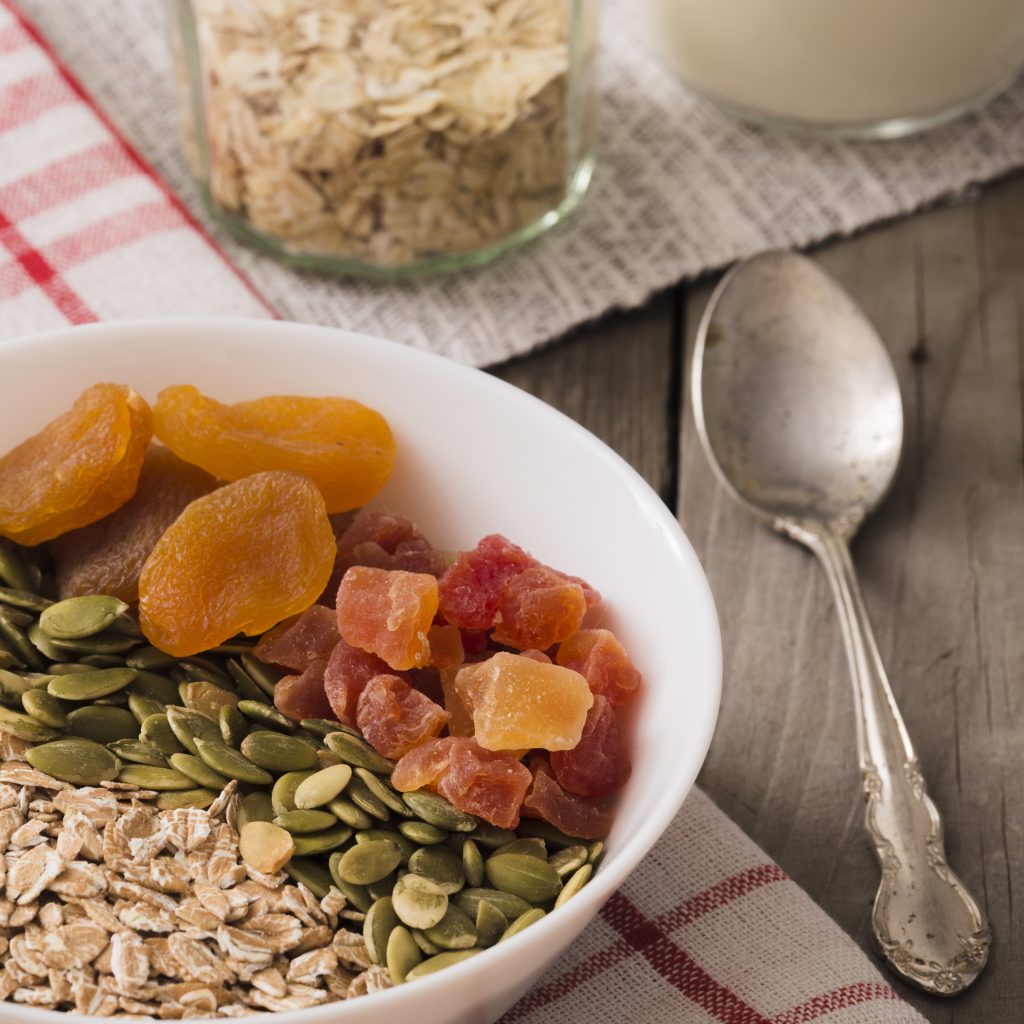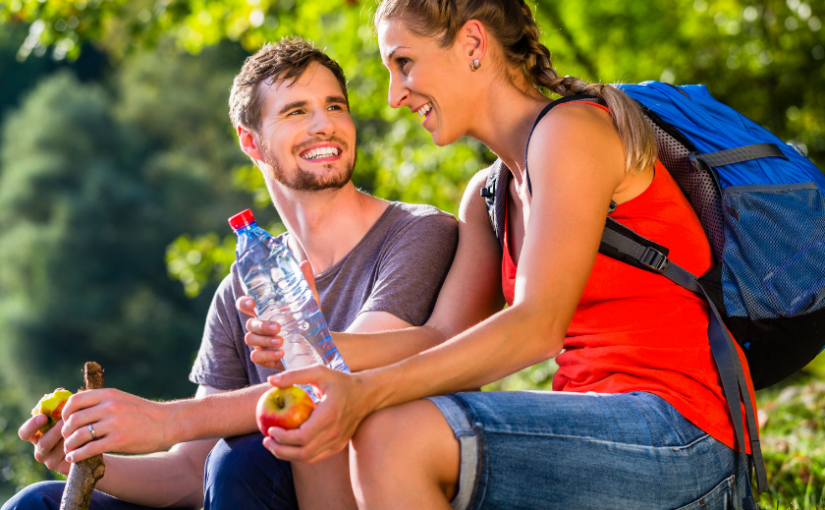Now that temperature is increasing – at levels that may be considered historical records- we must pay special attention to two main aspects if we go hiking. These are food and hydration.
Of course we all agree that going for a walk should be a pleasant and fun experience. But it must be taken into account that, as we walk, we will find ourselves in areas where there is little or no human presence… and, therefore, getting help will be tricky at least.
Then, we must ensure that our body has enough energy and electrolytes to reach our destiny. So from Walkaholic we give you several tips on this subject.
Contents
Food and hydration in the summer
This is especially important in summer. As the temperature rises, our body increases perspiration to keep us cool. In return, when we sweat, we lose water and salts by evaporation as result.

In addition, a route of any difficulty requires considerable physical effort. Therefore our body has to consume glucose and other nutrients to mobilize our muscles and move forward.
But in this particular we can be mistaken for both excess and default.
Carrying too much water or food in our backpack increases weight, and therefore the effort that we must do. Then, before going on the road, you should think carefully about the foods and drinks that we need to carry.
What foods to take to a summer route?
First, we must bear in mind that at high temperatures the food decomposition increases. The solar radiation that you will get will be also higher during summer: the temperature will be increased even inside the backpack.
Therefore, in the summer, special attention should be paid to bringing non-perishable food, as these are not spoiled by heat. Also, you can carry a sandwich without any sauce, or fresh foods like vegetables.
The foods you choose should be rich in nutrients and calories. However, it is always advisable to bring a small supply of nougat, dark chocolate or cereal bars in case we are suffering from hypoglycemia. These will give you a quick hit of blood glucose, which will make you feel much better fast.
For half-day routes
It is advisable to bring some fruit, which provides fast-absorption carbohydrates. They can be in dried form or in compotes, which take little space in the backpack and allow us to face a rigorous walk without setbacks.
Another smart choice to feed us during our hiking trips in summer are nuts. They provide vegetable fats and proteins, being rich in fiber that slow gastric emptying, so we won’t feel so hungry on route.
For all-day routes

It is advisable pack to dried fruits, compotes and nuts in our backpack, to which we will add a white bread sandwich with some protein.
Fresh skimmed cheese and turkey or chicken are good choices, because they withstand high temperatures without breaking down. You can also bring some dark chocolate, which besides the contribution of sugars acts as a stimulant: cocoa is rich in theobromine, with an effect similar to caffeine.
Since volume and weight are a limiting factor, professional trekkers use gels, cereal energy bars and isotonic drinks to supplement their diet on the road.
For long routes with camping

When a tour requires several stages camping / in bivouac, to the above it must be added other foods to regain strength.
The quantities will depend on the number of days that are spent in the open, but the recommended foods for summer months are:
- For breakfast, flakes or oatmeal
- Powdered milk, infusion, soluble coffee or tea
- Dried or freeze-dried food (it is very compact and you only need to add boiling water to prepare it)
- Dates or dried figs or sweet quince
- Sausages
- White rice prepared without condiments
- Pasta prepared without sauce
- Instant soups
How to hydrate well on the road
Many modern backpacks have a system of water tanks called camel bags, which are very efficient at distributing the weight of liquid that we transport evenly.
Although in many strong physical activities it is known that the water supply is not sufficient to replace the electrolytes lost, in hiking it is not necessary to take isotonic drinks. The necessary salts and carbohydrates can be provided by the food.
However, if you want to bring sport drinks (industrial or homemade) in case you feel very dehydrated, it is not a bad idea. You can also use oral rehydration salts, which are sold freely in pharmacies.
The water weighs almost 1 kg for each liter you carry, so you must calculate the weight of your backpack keeping in mind that water is essential. You must carry at least 2 liters, which is the amount of water a healthy adult needs. But to be sure, better to take 3 liters: keep in mind that if you lose 2% of your body mass in water, you will begin to feel the effects of dehydration.
You must drink before, during and after hiking. To do this, plan on drinking small sips every 25 minutes or half an hour, no matter if it is not hot or you are not thirsty.
Keep in mind: never drink from untreated water sources, or you’ll get sick. If there is no other way, always choose water that is not stagnant and use some purification system, like boiling, filtering or using water purification tablets.
Some important tips for eating and staying hydrated on a summer route

- Combine water with an isotonic drink or food and supplements to replenish the electrolytes and mineral salts that you lose by perspiration.
- Do not spend long periods of time without eating. It is better to eat little, but on a regular basis. This way, you will not suffer from hypoglycemia.
- Always bet on foods that you have eaten before and are pleasant and safe to you. Respect the trail and do not risk your health.
- Keep food in zippered bags or tightly sealed containers with a lid. This avoids the attention of insects, rodents or larger animals.
- If you do not want to carry what you need to cook during a long route, there are brands that offer dehydrated food for mountain routes. To prepare them, you only need to add boiling water and seal the same bag with a security seal.
- Before leaving, study your route carefully and mark places along the road where you can get water and food, if necessary.
What do you think about our advices? Do you have an ace on your sleeve that you want to share with our community? If so, leave us a comment and remember: watch out for what you eat and how you hydrate while you are hiking in this hot summer.
Apúntate a nuestra newsletter semanal
Te enviaremos un correo cada semana con el nuevo artículo junto a las novedades de nuestra app móvil de senderismo.


One thought on “Eating and staying hydrated on summer routes”